A chocolatey twist on a classic dessert – this Chocolate Pavlova is dressed with freshly whipped cream, melted chocolate and seasonal berries!
This blog post is kindly sponsored by Menier Chocolate, however all the opinions are my own.
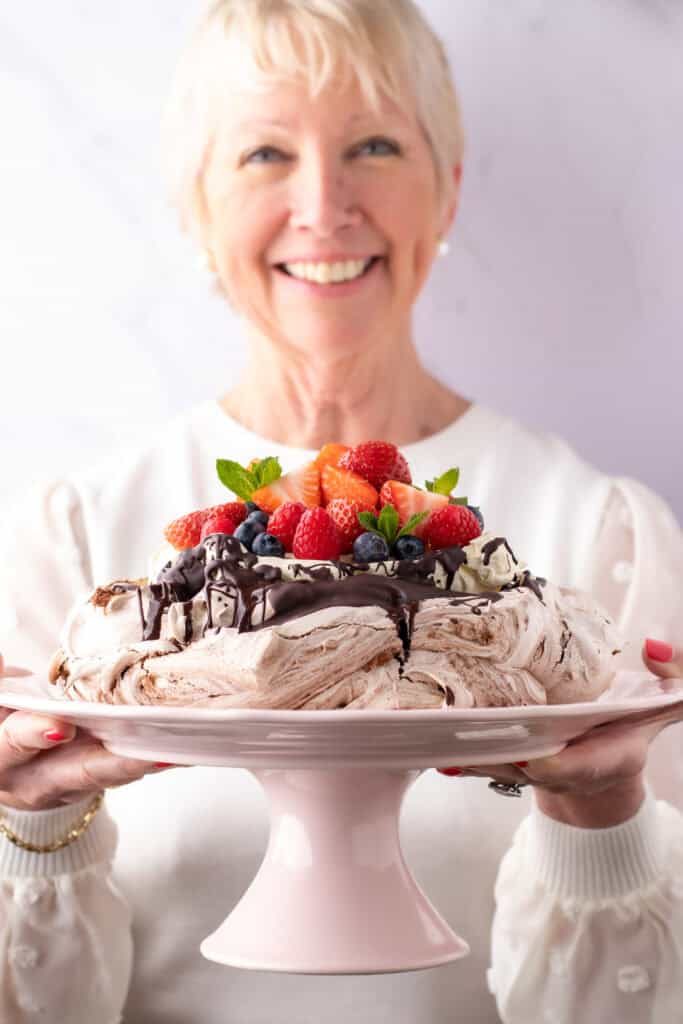
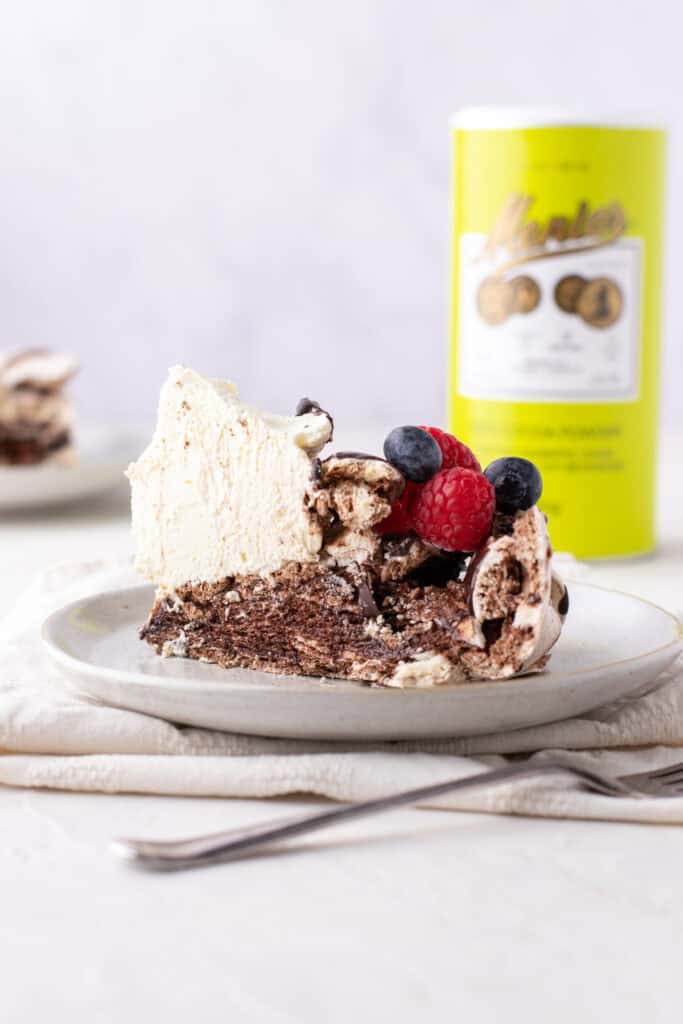
Reasons to love this Chocolate Pavlova
- Crisp on the outside, soft and chewy on the inside
- Flavoured with 100% cocoa powder
- Dressed with freshly whipped cream, melted chocolate and fresh berries
- A showstopper dessert that’s perfect for any occasion
- Make ahead of time and decorate just before serving
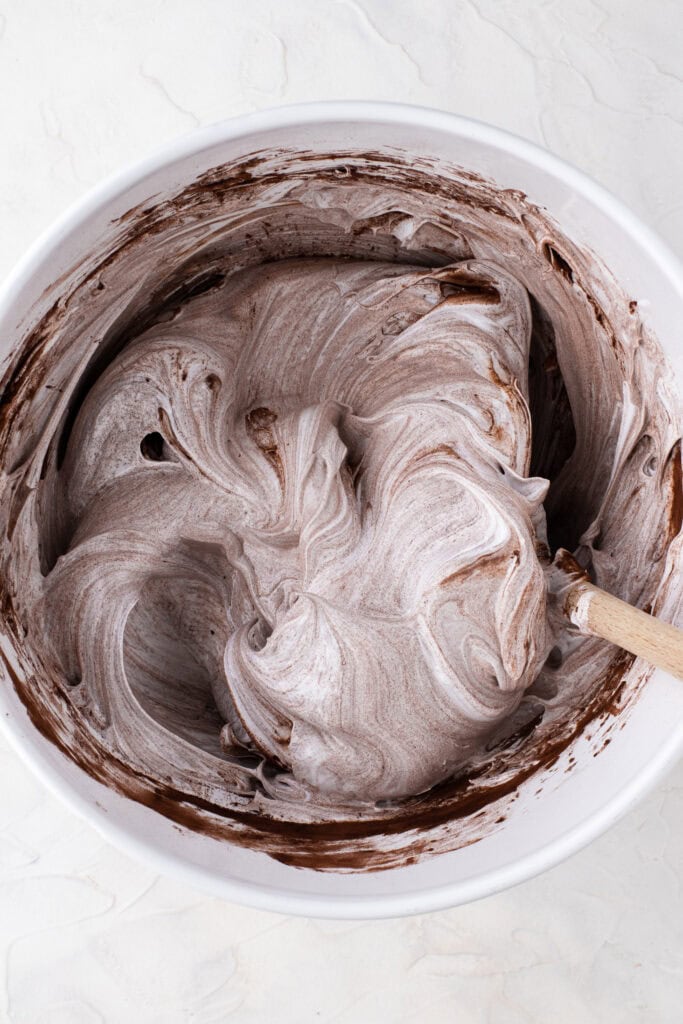
What’s the difference between meringue & pavlova?
You might be wondering what the difference is between a meringue and a pavlova? I asked my mum the same question, which I why I’ve decided to include it in the blog post. In short…
Meringue = crispy and dry throughout.
Pavlova = crisp on the outside, chewy and marshmallow-like on the inside.
I know which one I prefer 😉
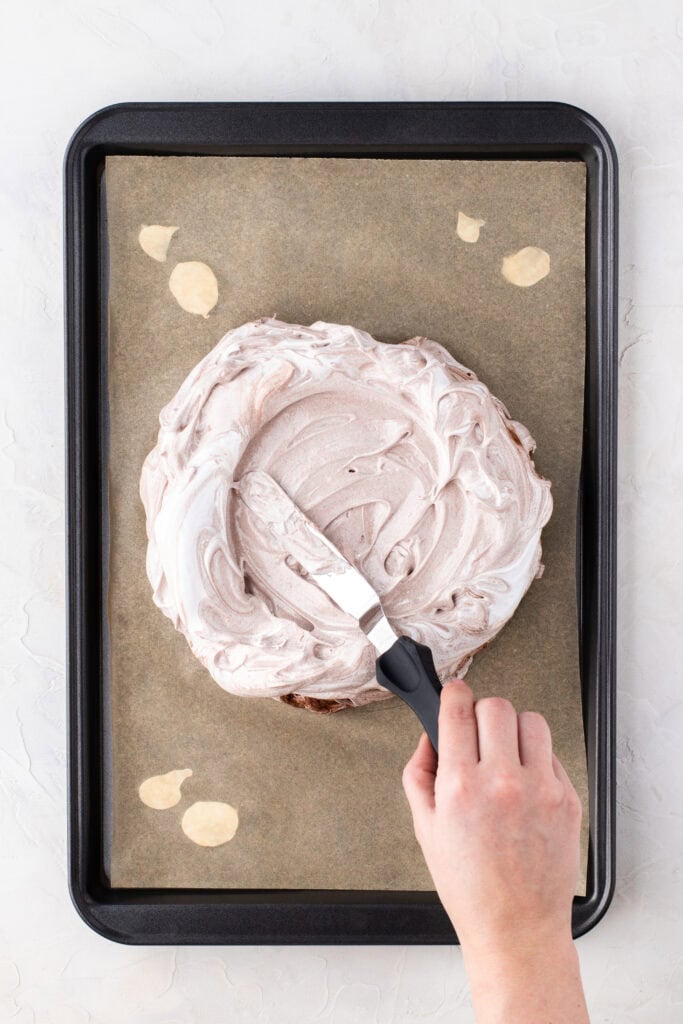
Ingredients to make chocolate pavlova
Although chocolate pavlova can be a little tricky to make, the good news is that you only need 4 basic ingredients to make it:
- Egg whites – the main ingredient! Choose good quality, fresh eggs and make sure they’re at room temperature.
- White caster sugar – used to sweeten the pavlova. Caster sugar is the best type to use for meringue because the superfine sugar crystals will dissolve more easily into the egg whites.
- White wine vinegar – stabilises the pavlova and helps prevent it from collapsing.
- Menier 100% Cocoa Powder – swirled into the meringue to make this a chocolate pavlova. Menier is my go-to for cocoa powder and all things chocolate, their products are of the highest quality and add such a rich and intense chocolatey flavour to fine desserts and cakes.
You can dress up your pavlova with any toppings you like. Personally, I don’t think you can beat freshly whipped cream, melted chocolate and a selection of seasonal berries.
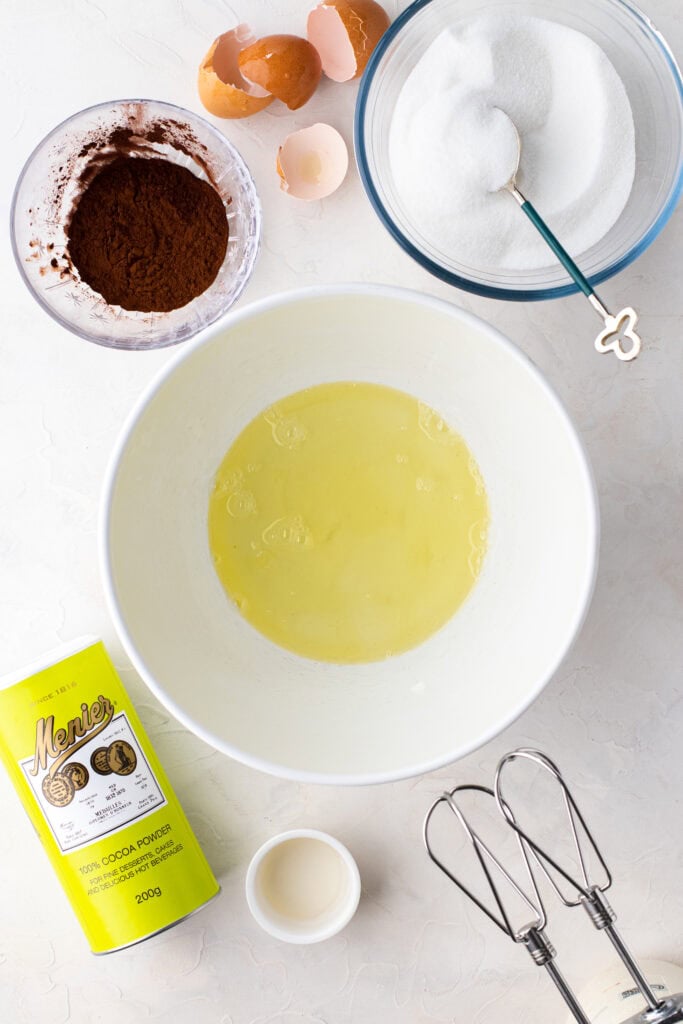
My mum’s 3 tips for making chocolate pavlova
- Clean equipment is key. Make sure your mixing bowl and whisk for the egg whites are spotlessly clean. Any grease will mean the egg whites will not whisk to the correct consistency.
- Add the sugar gradually. 1 tbsp at a time is best, whisking well in between spoonfuls until the meringue is thick and shiny. The temptation is to tip all the sugar in at once, but this causes the egg whites to flatten and not reach soft peaks. I recommend counting 20 seconds between each spoonful as a rough guide.
- Let the pavlova cool in the oven to avoid cracks. After the baking time is up, turn the oven off and keep the door closed. Leave the chocolate pavlova inside until completely cold, 4 hours minimum but overnight for best results.
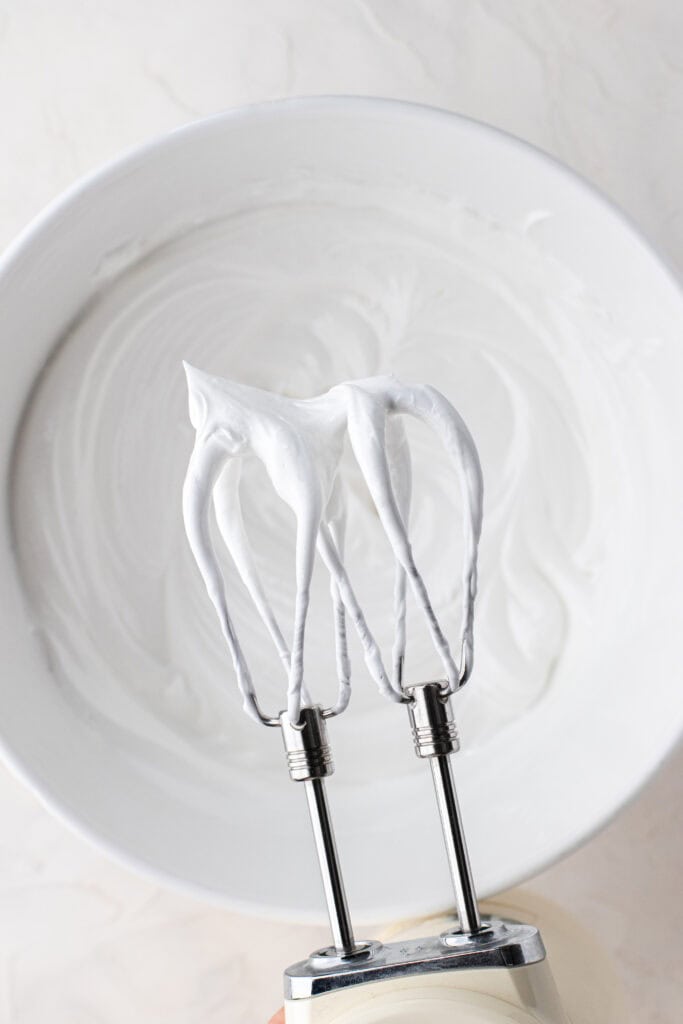
Your guide to soft & stiff peaks
When I first started baking, I would see the terms soft peaks and stiff peaks used and think… what on earth!? To make the chocolate pavlova you will need to first whisk the egg whites to soft peaks, add the sugar, then whisk them again to stiff peaks. Now I know when I first started baking, I would see ‘soft peaks’ and ‘stiff peaks’ and have no idea what they meant, let alone what the mixture needed to look like. So in case you’re in the same boat here’s an easy guide to follow:
Soft peaks
- Appearance: bright white and thick.
- Consistency: If you lift the whisk up, a peak should form but the tip should immediately curl over.
- Time: 6-8 minutes on medium-low speed.
Stiff peaks (image below)
- Appearance: glossy, bright white and thick.
- Consistency: If you lift the whisk up, a peak should form and stay standing upright.
- Time: 5-6 minutes on medium speed (after the sugar has been added).
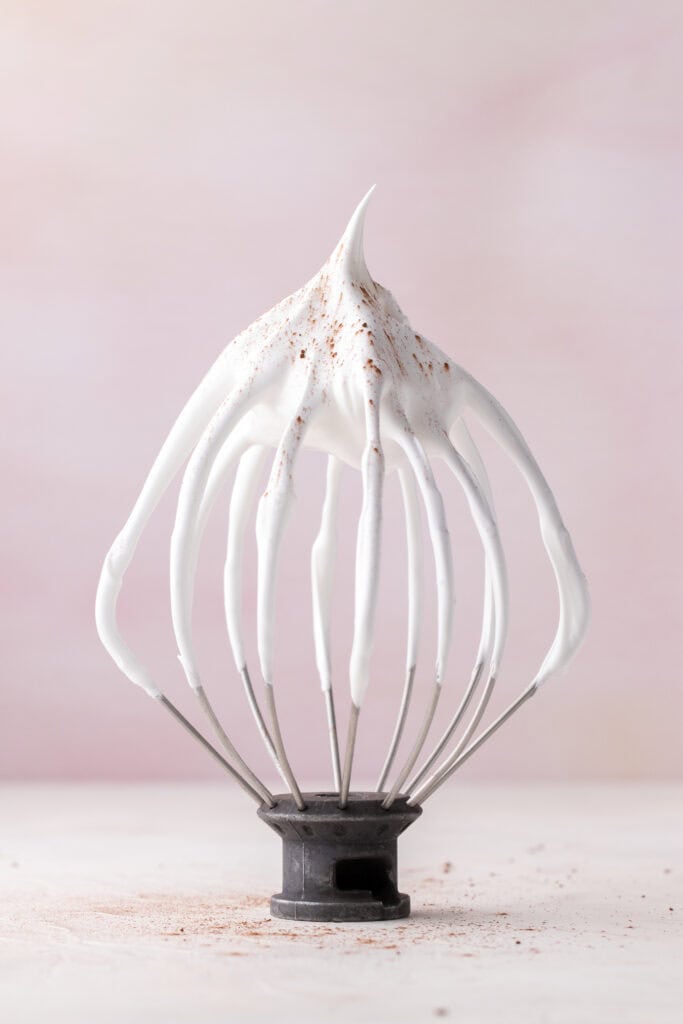
Why do you turn the oven temperature down?
The oven is first preheated to 150°C but as soon as the chocolate pavlova is put inside, then temperature is turned down to 130°C. The hot oven will crisp up the outside, but then the reduced temperature will make sure it cooks slowly, avoids burning and creates a soft, chewy texture inside.
What causes pavlova to crack?
A few small cracks here or there is totally normal and to be expected. But your chocolate pavlova shouldn’t crack or collapse in the middle. If it has, then there are 3 reasons why this could have happened:
- The egg whites were whisked too quickly. It may be tempting to crank the mixer up to high speed, so that the egg whites whisk to soft peaks more quickly. But this quick and vigorous incorporation of air into the egg whites will form lots of large air bubbles, which when baked are likely to expand, causing the pavlova to rise unevenly and crack.
- The oven temperature was too high. If your oven was too hot, the pavlova will rise and expand too quickly which ultimately causes it to crack. All ovens slightly vary when it comes to temperature. It’s why I recommend purchasing an oven thermometer so you can preheat your oven to precisely the right temperature.
- The pavlova wasn’t completely cool before being taken out of the oven. Pavlova’s are delicate things and a sudden change in temperature from a warmish oven to a cooler room can cause it to collapse and crack. If you can make the recipe ahead of time, the best thing to do is bake the pavlova and leave it in the oven overnight with the temperature off. That way you can be sure it has cooled down completely.
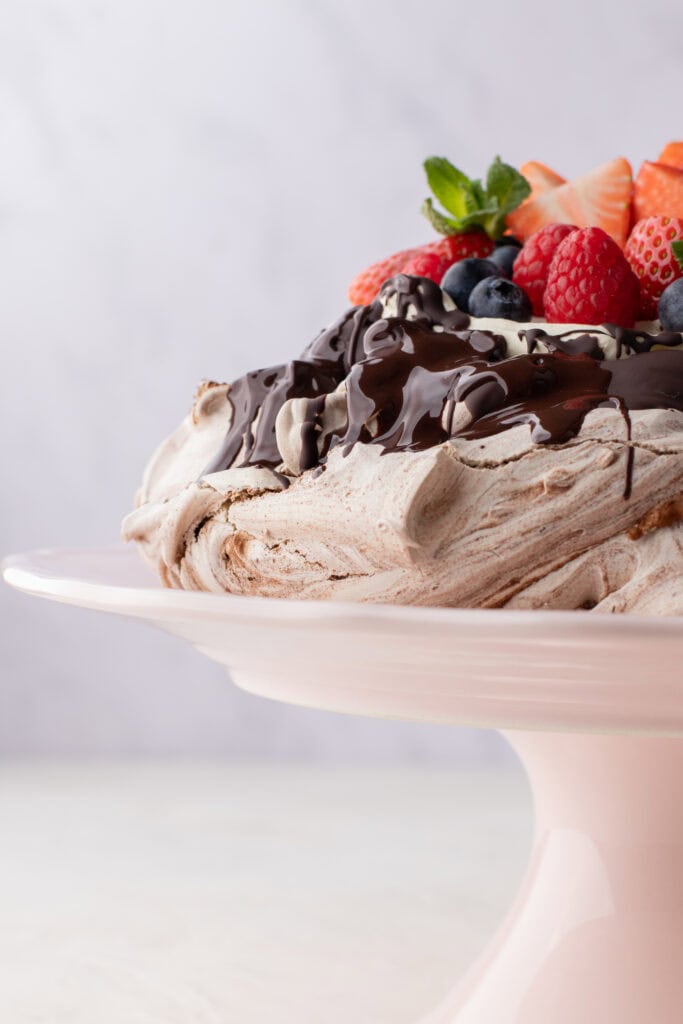
Quick links to equipment
Looking for more sweetness?
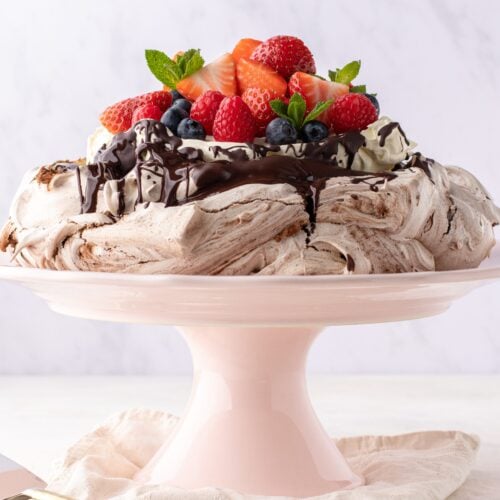
Chocolate Pavlova with Berries
Ingredients
Pavlova
- 6 Large Eggs at room temperature
- 300 g White caster sugar
- 1 tsp White wine vinegar
- 25 g Menier 100% Cocoa Powder
Decoration
- 600 g Double cream
- 50 g Menier 70% Dark Chocolate melted and cooled
- 200 g Fresh berries strawberries, raspberries, blueberries
- Fresh mint to decorate
Instructions
Start by making the pavlova
- Preheat the oven to 150°C (fan).
- Line a large flat baking tray with greaseproof paper. Draw a 20cm round circle in the middle as a guide for how big to make the pavlova.
- Separate the eggs with the egg whites in one bowl and the yolks in another bowl. Take extra care doing this to make sure no yolk gets into the whites.
- Attach the whisk attachment to your stand mixer and make sure the bowl is spotlessly clean and dry. Tip the egg whites into the bowl.
- Turn your mixer onto a medium-low speed and whisk the egg whites until they reach soft peaks (approx. 6-8 minutes). If you lift the whisk up, a peak should form but then immediately curl over. Read the notes in the blog post for more help on what soft peaks should look like.
- Now add 1 tbsp of the caster sugar at a time, counting 20 seconds between each addition. This will take a little while but it’s important to leave enough time for the sugar to dissolve into the meringue before you add the next spoonful.
- Once all the sugar is added, turn the mixer up to medium speed and whisk for roughly 6 minutes until the meringue reaches stiff peaks. The meringue should stand tall with no curl. Test that the sugar has fully dissolved by rubbing a bit of the meringue between your fingertips, it should feel smooth and not grainy. If it feels grainy, continue to whisk for another minute.
- Add the white wine vinegar and whisk into the meringue.
- Sift the cocoa powder into the bowl, and very gently fold it into the meringue using a large metal spoon or silicone spatula. You want to avoid folding too many times otherwise all the air will be knocked out, you also want to create a swirly pattern so only fold 4-5 times.
- Spoon the meringue onto the baking tray, making a tall mound of meringue in the middle of the circle you have drawn. TIP: dab the corners of the baking tray with meringue to stick the greaseproof paper down.
- Use the back of a spoon to shape the meringue into a round shape, making a crater in the middle to hold the filling.
- Place on the middle shelf of the oven and immediately turn the temperature down to 130°C (fan). Bake for 80 minutes.
- Turn the oven off and leave the door closed. Let the pavlova cool completely inside the oven for at least 4 hours or overnight for best results. Do not open the oven door during this time otherwise the pavlova will crack.
Decorate the pavlova (just before you're ready to serve)
- Carefully peel the pavlova off the baking tray and place on a pretty serving platter or cake stand.
- Use an electric whisk to whisk the double cream until soft and thick (approx. 5 mins). Spoon into the middle of the pavlova.
- Drizzle the melted dark chocolate around the edge.
- Top with the fresh berries and few sprigs of mint.
- Serve straightway and enjoy!
Notes
More dessert recipes to love
This post contains affiliate links which means I will make a small commission if you purchase through those links. I only recommend products that I know, trust and love!



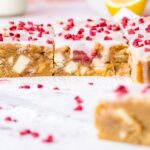


Wow, what can I say! The recipe is very easy to follow and the pavlova is absolutely delicious and the cacao adds a nice twist. It is a must-try and the best recipe that’s out there. Jessie is also always willing to help with any questions regarding the bakes.
Hey Dominika! What a lovely lovely comment 🥰 thank you so much for taking the time to leave your feedback, it makes me so happy to hear you loved the recipe.